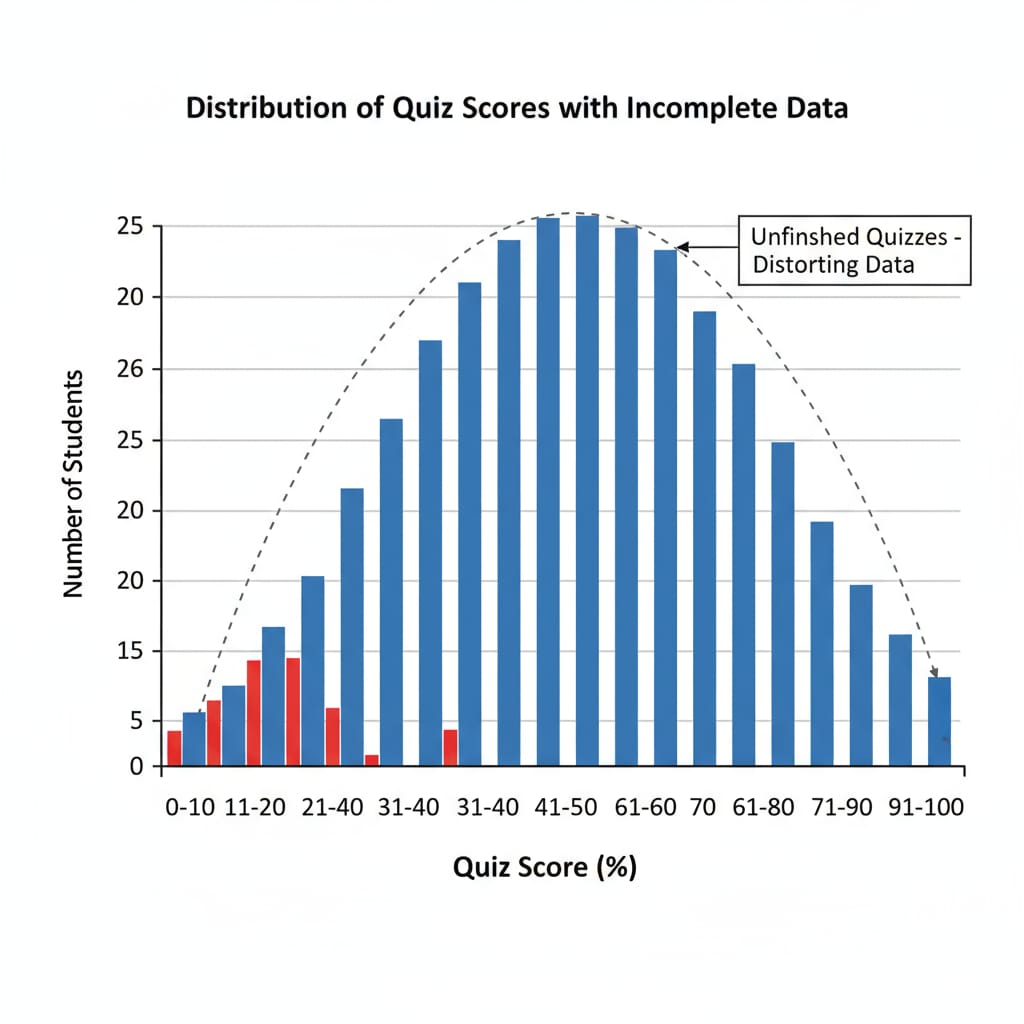In the realm of K12 education, outliers, test scores, and data analysis are crucial elements that educators must navigate carefully. One particular challenge lies in dealing with what can be termed as “hidden outliers,” especially when it comes to students who don’t complete all questions in extra credit quizzes. These data points, although not classic outliers, can skew the true distribution of scores and affect the accuracy of educational evaluation.

The Phenomenon of “Hidden Outliers” in K12 Quizzes
In K12 educational testing, a common scenario is when students encounter extra credit quizzes. Some students may not finish all the questions, creating data that deviates from the norm. These are not the typical outliers that we are familiar with, such as extremely high or low scores due to exceptional performance or errors. Instead, they are “hidden” because they represent incomplete attempts, which can distort the overall picture of student performance. For example, if a significant number of students leave questions unanswered in a bonus quiz, the average score and distribution may not accurately reflect their true knowledge or abilities.
Impact on Data Analysis and Educational Decision-Making
The presence of these “hidden outliers” can have a profound impact on data analysis. Firstly, it can affect the calculation of basic statistical measures like mean, median, and standard deviation. If a large portion of the data is from unfinished quizzes, these measures may not be reliable indicators of the overall student performance. Secondly, in terms of educational decision-making, inaccurate data can lead to wrong conclusions. Educators may misinterpret the students’ understanding of the subject matter and design inappropriate teaching strategies. For instance, if the data shows a lower average score due to unfinished quizzes, teachers might overemphasize certain topics that may not actually be the root cause of the problem.

To address this issue, educators need to adopt appropriate data processing methods. One approach is to first identify these “hidden outliers.” This can be done by looking at the number of unanswered questions for each student. Once identified, educators can choose to either exclude these data points from the analysis or use more advanced statistical techniques to account for them. For example, they can use imputation methods to estimate what the scores of these students might have been if they had completed the quizzes. Another option is to group the data based on the completion status and analyze each group separately.
Readability guidance: As seen above, we have used short paragraphs to convey complex ideas. For each key point, we provided a clear explanation. By using examples and transitional words like “firstly,” “secondly,” and “for example,” we ensure the text flows smoothly. The images also help to illustrate the concepts, making it easier for readers to understand the relationship between outliers, test scores, and data analysis in the context of K12 quizzes.


